The discovery of the tomb mummy of King Tutankhamun in 1922 by British archaeologist Howard Carter marked one of the most significant archaeological finds of the 20th century. Nestled in the Valley of the Kings, the tomb of the young pharaoh revealed an extraordinary collection of treasures that offered profound insights into the grandeur of ancient Egypt. Among these remarkable discoveries were the inner sarcophagus and the mummy of King Tutankhamun, both iconic symbols of Egypt’s rich cultural and spiritual heritage. Let’s explore the hidden treasures of ancient Egypt with archeology.dulichvn.net.
The Inner Sarcophagus Mummy of King Tutankhamun
The inner sarcophagus of King Tutankhamun is a masterpiece of ancient Egyptian artistry and craftsmanship. Its discovery not only unveiled the opulence of royal burials but also highlighted the spiritual significance of these intricately designed artifacts.
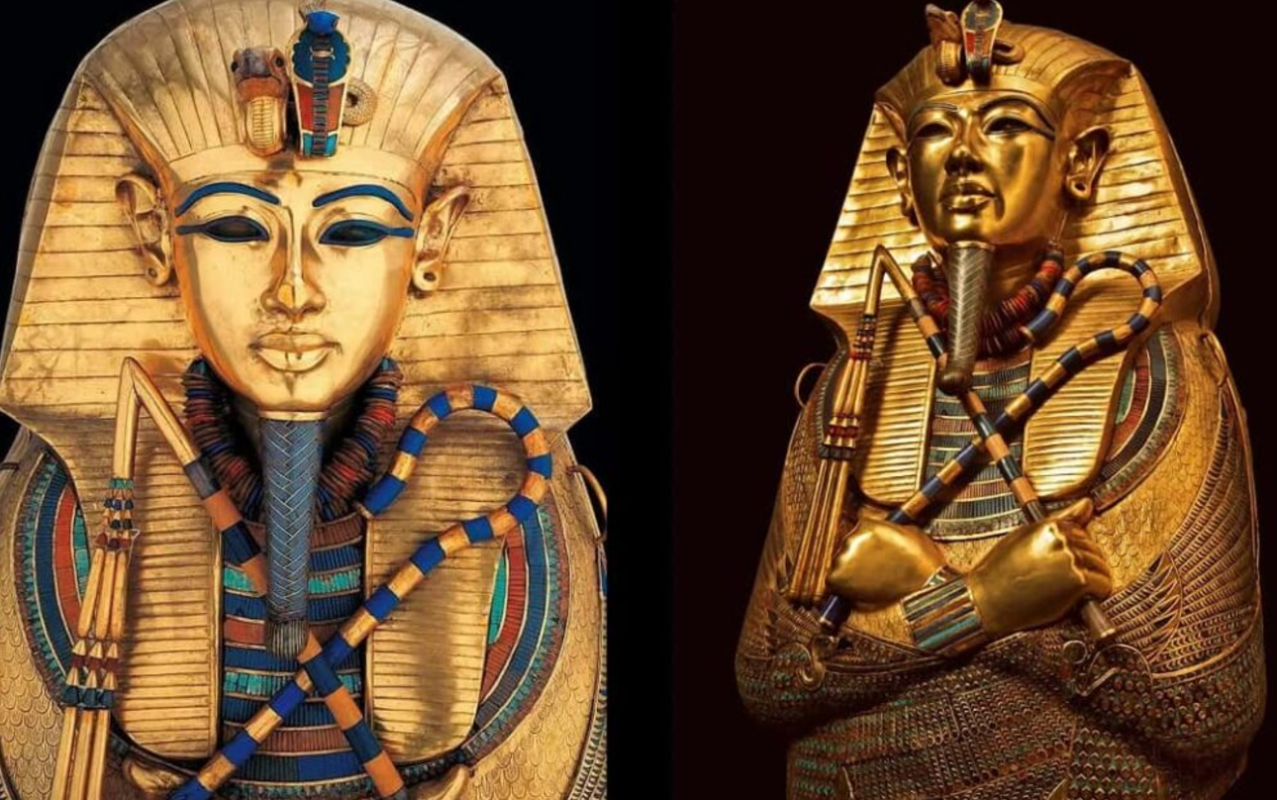
1. Composition and Craftsmanship
The inner sarcophagus was crafted from solid gold, reflecting the immense wealth and artistic expertise of ancient Egypt. Measuring over 6 feet in length and weighing approximately 110 kilograms, the sarcophagus is a testament to the labor-intensive process and the exceptional skill of ancient artisans.
The gleaming surface of the sarcophagus is adorned with intricate carvings, depicting protective deities such as Isis and Nephthys. These figures were believed to safeguard the king’s body and soul during his journey to the afterlife.
See more: King Seti I mummy is the best preserved in history.
2. Symbolic Hieroglyphs
The outer layer of the sarcophagus is inscribed with detailed hieroglyphs, drawn from the Book of the Dead, an ancient Egyptian funerary text. These inscriptions include spells and invocations intended to guide and protect King Tutankhamun in the afterlife. The symbolism underscores the Egyptians’ profound belief in the afterlife and the need for spiritual protection during the perilous journey beyond death.
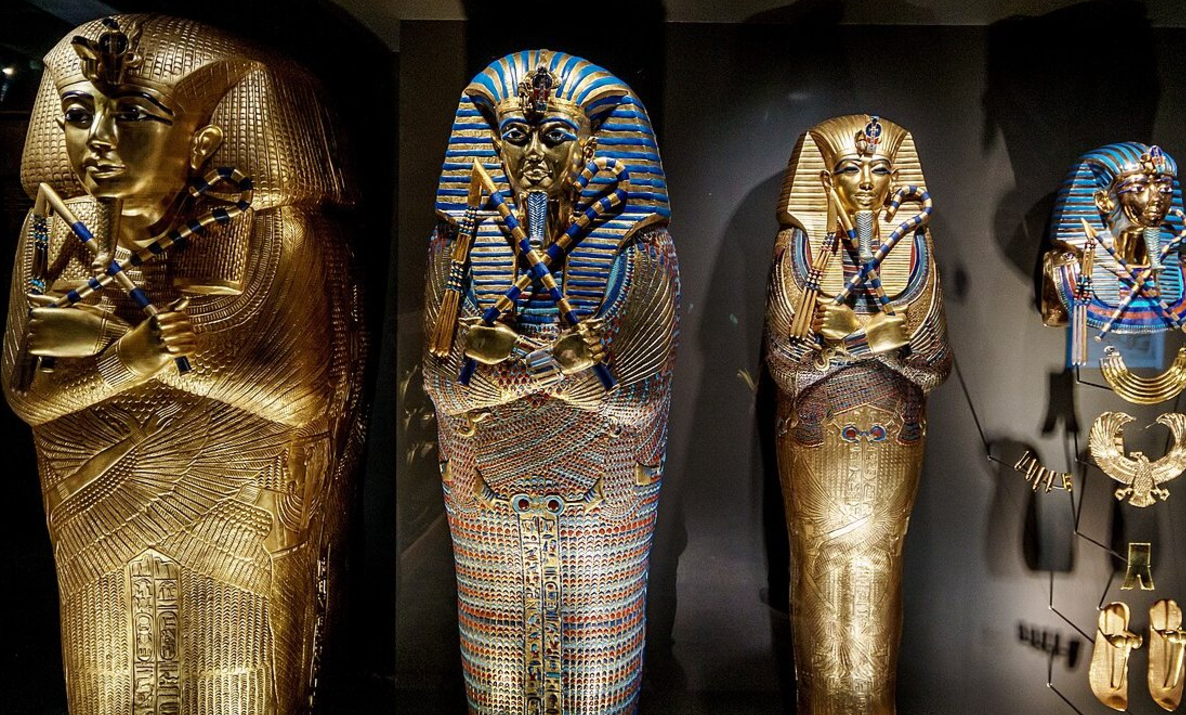
3. Role in the Afterlife
The inner sarcophagus was designed as the ultimate layer of protection for the king’s mummy, ensuring that his physical form remained intact. This preservation was crucial in Egyptian theology, as the survival of the body was believed to enable the ka (spirit) to reunite with it and live eternally in the afterlife.
The Mummy of King Tutankhamun
Encased within the magnificent sarcophagus lies the mummy of King Tutankhamun, a poignant relic of a life and reign cut short at the tender age of 19. The mummy and its adornments reveal much about ancient Egyptian burial practices and beliefs.
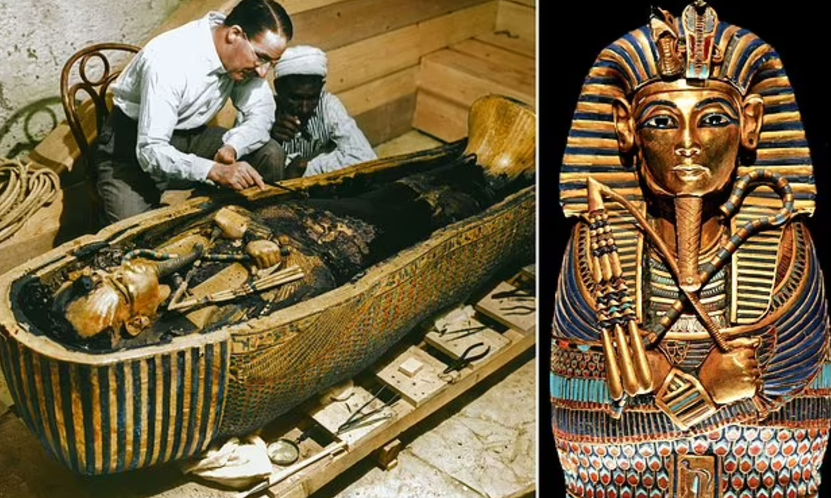
1. Preservation and Wrapping
The mummy of King Tutankhamun was carefully prepared using advanced mummification techniques of the time. Wrapped in fine linen strips, the body was treated with resins and oils to ensure long-lasting preservation. The elaborate wrapping also concealed a trove of amulets and ornaments, each symbolizing protection, health, and divine favor.
See more: King Seti I mummy is the best preserved in history.
2. Adornments and Amulets
The mummy was adorned with a variety of precious jewelry, including necklaces, bracelets, and rings. Among the most notable items were protective amulets placed strategically across the body. These amulets, shaped like scarabs and other sacred symbols, were believed to shield the king from harm and enhance his spiritual journey.
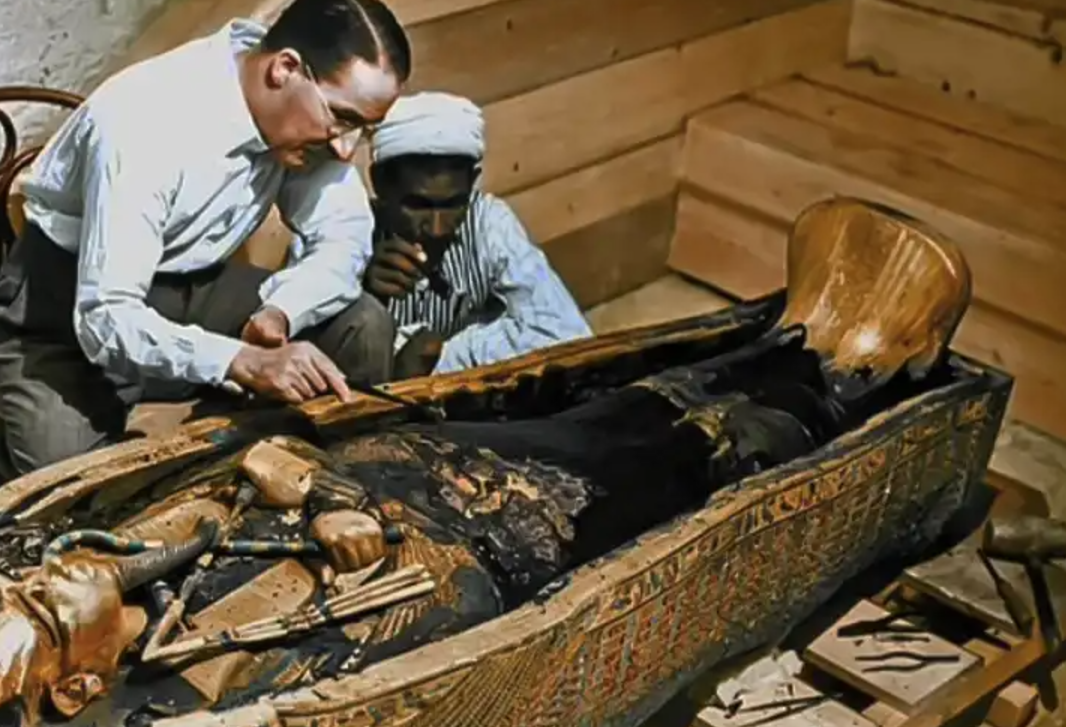
3. Insights into Ancient Egypt
The study of King Tutankhamun’s mummy has provided invaluable insights into the health, lineage, and lifestyle of ancient Egyptians. Modern forensic techniques have revealed details about his cause of death, genetic heritage, and physical attributes, enriching our understanding of the pharaoh’s life and the period in which he lived.
The Historical Significance of the Discovery
The tomb of King Tutankhamun continues to captivate historians, archaeologists, and the public alike. The inner sarcophagus and the mummy hold profound historical and cultural significance, offering a window into the opulence and complexity of ancient Egyptian civilization.
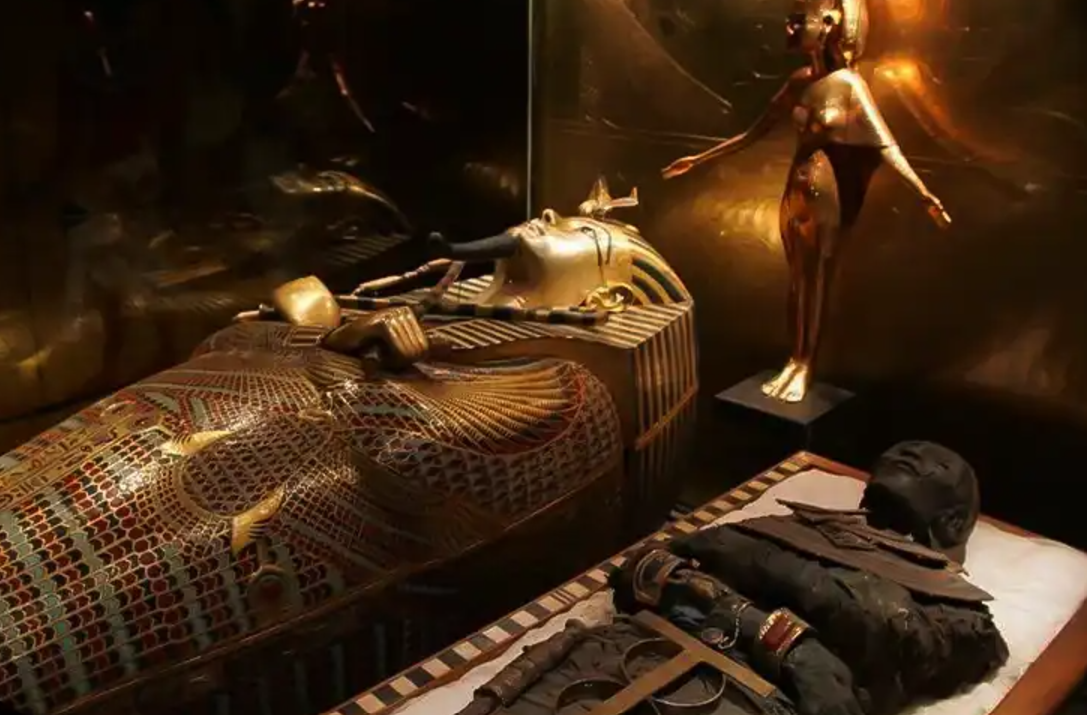
1. Cultural Legacy
The discovery has cemented King Tutankhamun’s legacy as one of ancient Egypt’s most famous rulers. The breathtaking treasures, including the golden mask and the sarcophagus, symbolize the zenith of Egyptian art and the civilization’s unshakable faith in the afterlife.
2. Global Fascination
Artifacts from the tomb, including the sarcophagus and the mummy, have been exhibited worldwide, drawing millions of visitors. Today, these treasures are housed in the Egyptian Museum in Cairo, where they remain a source of awe and inspiration for people from all corners of the globe.
3. Contributions to Archaeology
The discovery of the tomb has significantly advanced the field of Egyptology, inspiring countless excavations and research projects. The intact nature of the burial chamber provided a rare glimpse into the funerary practices of the 18th Dynasty, filling gaps in our understanding of ancient Egyptian history.
Conclusion
The inner sarcophagus and the mummy of King Tutankhamun stand as enduring symbols of ancient Egypt’s splendor and mystique. They encapsulate the profound artistry, spiritual beliefs, and funerary traditions of a civilization that has fascinated humanity for millennia. As these treasures continue to be studied and admired, they serve as a bridge connecting the modern world with the timeless allure of ancient Egypt.

CÁC TIN KHÁC
Mark Twain & Olivia Langdon: A 36-Year Love Story Filled with Laughter and Devotion
The Tollund Man: A 2,400-Year-Old Mystery Preserved in a Danish Bog
Skara Brae: Scotland’s Hidden Neolithic Village
Porta Nigra: The Hidden Depths of Trier’s Iconic Roman Gate